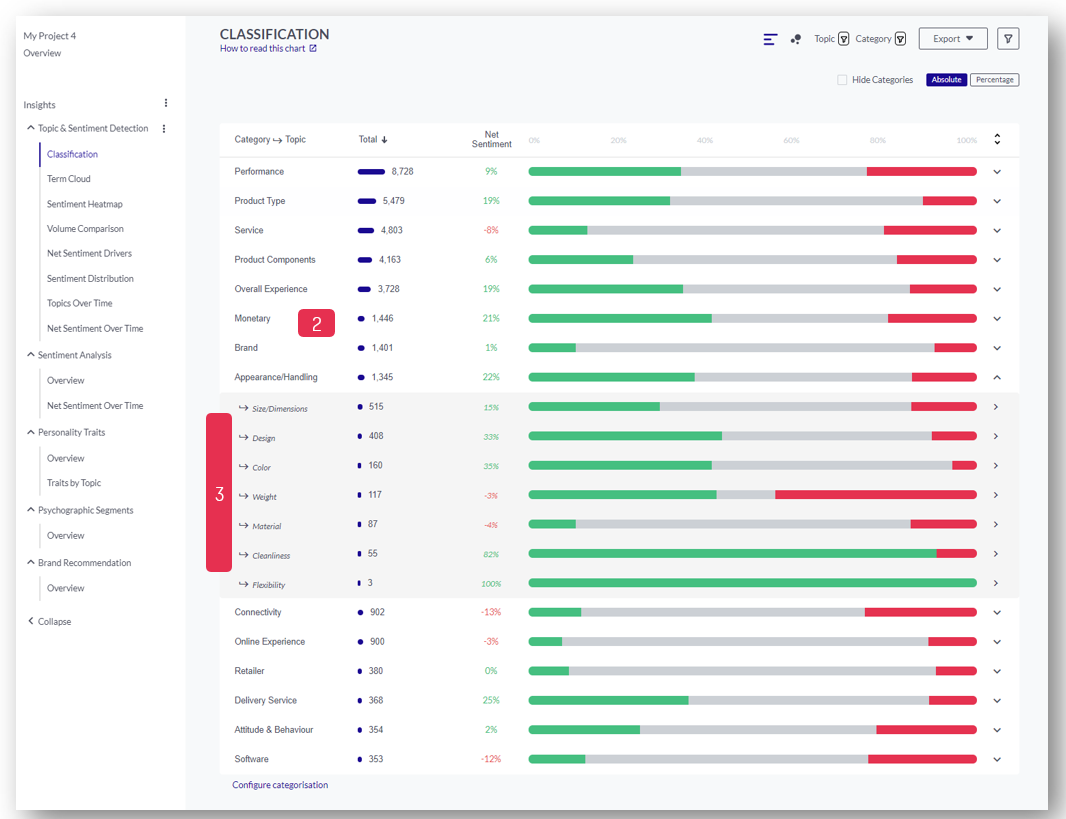Learn more about the topic detection technology and the different hierarchies of topics (category, topic, term)
1. How does topic detection work?
2. Categories
3. Topics
4. Terms
1. How does topic detection work?
Once the data is uploaded, our text analytics engine first detects keywords and phrases (Terms) from the bottom-up and then clusters similar terms into Topics. These topics are then further grouped into high-level Categories.
When a term from a specific topic is mentioned in a text, this text is then tagged with the topic and the category it belongs to.
You can view and customise the topic model (category-topic-term) in the 'Configuration' view, or modify single terms of a topic via our inline editing function.
By selecting a specific use case (=model pre-trained with millions of text) the model is able to discover distinctive and clean topics from the specific use case or industry, and group them into meaningful categories.

2. Categories
Categories are the highest level. Within a category, similar topics are being grouped together.
Categories are especially useful to a) get a digestible overview of what is being mentioned when there are too many topics, b) be used as a filter to browse results towards topics that belong to a specific aspect.
3. Topics
All detected keywords and phrases (Terms) are being grouped together into Topics.
A topic can be a specific product feature (“battery life”), characteristics (“style”), service aspect (“billing issue”), brand (“Tesla”), or more. Combined with the topic sentiment, topics are the key information from which the insights derive.
4. Terms
Terms are words and phrases which are mentioned in the data. A topic contains multiple terms.
E.g. here the topic “Price” (in the category 'Product Attributes') contains terms such as “good price", "affordable", "too expensive" etc.
In the Term Cloud, you can see positive and negative terms.
